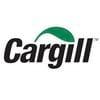Welfare of Turkeys During Live Haul
What is live haul?

Preparing the environment


- Creating the right live-haul environment requires careful lighting management with a balanced light intensity. Turkeys need to be active to be herded effectively toward the conveyor belt. Low light intensity reduces their mobility, while high light intensity can overstimulate them, making them overly active and flighty, complicating herding.
- Once turkeys are on the conveyor belt, low light intensity is crucial to keep them calm as they are placed onto the truck.

Herding turkeys: inside the barn

Loading turkeys: outside the barn


Coop conditions

Transport and lairage
- In hot weather, birds are at risk of heat stress. Loading and unloading should be planned during the cooler hours of the day or night, and foggers and fans should be used [3].
- In cold weather, birds are at risk of cold stress that can be exacerbated by snow, rain, and wind chill. Weatherization shields made of wood, plastic, or tarps should be placed around coops to retain heat. Wet turkeys should not be loaded as they are at higher risk of hypothermia [4].
- During transport, drivers should stop periodically to monitor signs of thermal stress and modify weatherization shields as needed. Reducing vehicle speed in cold weather can reduce heat loss. In hot weather, planning routes that allow for maintaining a constant speed can ensure adequate airflow [4].
- After transportation, turkeys wait in the lairage area at the processing plant before processing. This holding shed area temporarily houses birds. In hot weather, air circulating fans and misting systems should be used to mitigate heat stress. Lairage usually lasts from two to four hours but varies with plant logistics [5].

Animal welfare risk factors during live haul
Animal factors
- Toms are characterized as more curious, confrontational, stronger, heavier, and slower than hens. These traits can make the handling process more challenging for crew members.
- Hens are more reactive (e.g., wing flapping and jumping) which increases the risk of bruising and fractured or broken bones [6].
- Older toms move slower due to tibiotarsal joint pressure from heavier weight [7], prolonging herding.
- Turkey avian reovirus, footpad dermatitis, toe deformities, undetected leg fractures, and bone and cartilage abnormalities are health conditions that hinder mobility and cause lameness [8,9,10]. Birds may need to be individually carried or placed into wheelbarrows to move through the barn.
Environmental factors
- As birds reach the end of the loader conveyor belt, bright light intensity (e.g., daylight or bright moonlight) can overstimulate them and increase risks of birds jumping off the loader.
- Poor litter quality, such as uneven surfaces and deep holes, creates hazards. Birds could fall during herding and risk herding birds over top of them, or gaps between the loader conveyor belt and ground could result in birds tripping and balking at the conveyor belt.
- Having fewer load out doors on a house results in turkeys having to travel further distances to the loader, which may complicate and prolong herding particularly if a flock has impaired mobility.

Animal welfare risk factors during live haul
Human factors
- Informal training, such as shadowing and observing experienced crew members, is the main method for training new live haul crew members. Informal training may increase the risk of less consistent, or even improper, techniques being utilized that compromise animal welfare. Formal training resources for handling market-ready turkeys are limited. The Poultry Handling and Transportation Quality Assurance Program [3] provides a good framework for improvement; however, there is a need to develop additional tools.
- Handling market-ready turkeys creates safety risks for workers, including physical exhaustion and injuries like broken fingers, noses, and scratches. These risks impact crew member’s well-being and resilience, particularly on farms with limited bird mobility.
Conclusions and applications
- Turkey handling is influenced by mobility challenges, environmental conditions like lighting and temperature, and human-turkey interactions. Proper management of these factors is crucial for reducing stress and improving welfare.
- Structured training programs focusing on turkey behavior, including flock behavior, sex-specific behaviors, and proper handling techniques, are essential to ensure humane practices and improve worker safety.
- Improving litter management, using appropriate light intensities, and minimizing the influence of weather can facilitate smoother handling and reduce stress for birds and workers.

Liu, X., S. Li, N. Zhao, L. Xing, R. Gong, T. Li, S. Zhang, J. Li, and J. Bao. 2022. Effects of acute cold stress after intermittent cold stimulation on immune-related molecules, intestinal barrier genes, and heat shock proteins in broiler ileum. Animals. 12:1-15. doi:10.3390/ani12233260.
Poku, R. A., E. Agyemang-Duah, S. Donkor, R. A. Ayizanga, R. Osei-Amponsah, R. Rekaya, and S. E. Aggrey. 2024. Changes in rectal temperature as a means of assessing heat tolerance and sensitivity in chickens. Trop. Anim. Health. Prod. 56:391. doi:10.1007/s11250- 024-04242-1.
US Poultry and Egg Association. 2016. Poultry handling and transportation. A quality assurance program for handlers & transporters of poultry. Turkey manual.
Poultry Service Association. 2017. Poultry Handling and Transportation Manual. http://www.poultryserviceassociation.com/uploads/2/7/9/6/27967763/2017_poultry _handling_and_transportation_manual.pdf
Rodrigues, D. R., M. B. Café, R. M. Jardim, E. Oliveira, T. C. Trentin, D. B. Martins, C. S. Minafra. 2017. Metabolism of broilers subjected to different lairage times at the abattoir and its relationship with broiler meat quality. Arq. Bras. Med. Vet. Zootec. 69:733-741. https://www.scielo.br/j/abmvz/a/9MRdgcYZhBpwWhLvzT75MQL/?lang=en
Weeks, C, and C. Nicol. 2000. Poultry handling and transport. Pages 363-384 in Livestock Handling and Transport. 2nd ed. CAB International, ed. Dr. T. Grandin. Bristol. United Kingdom.
Oviedo-Rondón, E. O., P. L. Mente, C. Arellano, B. D. X. Lascelles, and A. Mitchell. 2018. Influence of gait on bone strength in turkeys with leg defects. Poult. Sci. 97:2621-2637. doi:10.3382/ps/pey142.
Dalton, H. A., B. J. Wood, and S. Torrey. 2013. Injurious pecking in domestic turkeys: development, causes, and potential solutions. World. Poult. Sci J. 69:865-876. doi:10.1017/S004393391300086X.Dalton, H. A., B. J. Wood, T. M. Widowski, M. T. Guerin, and S. Torrey. 2016. Changes in leg health, skin, and plumage condition in domestic male turkeys of varying body weights. Appl. Anim. Behav. Sci. 178:40-50. doi:10.1016/j.applanim.2016.02.010.
Porter, R. 2018. Turkey reoviral arthritis update. Turkey health workshop. MPF Conv. Minneapolis, MN.
Sharafeldin, T. A., S. K. Mor, A. Z. Bekele, H. Verma, S. L. Noll, S. M. Goyal, and R. E. Porter. 2015. Experimentally induced lameness in turkeys inoculated with a newly emergent turkey reovirus. Vet. Res. 46:1-7. doi:10.1186/s13567-015-0144-9.



















